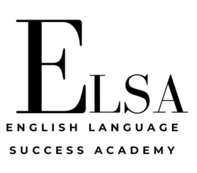Mastering the use of articles in English—a, an, and the—can be challenging for non-native speakers, especially for those whose native languages don’t have articles. English articles are small words that pack a punch in terms of meaning and clarity, and proper usage can make your speech and writing sound more natural. Additionally, good command of article usage is crucial for success in the writing sections of English proficiency exams such as IELTS and TOEFL.
This article will guide you through the rules, exceptions, and common mistakes when using English articles, along with practical tips for improving your usage.
The Basics: Understanding ‘A’, ‘An’, and ‘The’
‘A’ and ‘An’ (Indefinite Articles)
‘A’ and ‘An’ are known as indefinite articles because they refer to something nonspecific. These articles are used when the listener or reader does not know exactly which object or person is being referred to.
- ‘A’ is used before words that start with a consonant sound:
“I need a pen.” - ‘An’ is used before words that start with a vowel sound (a, e, i, o, u):
“She wants an apple.”
It’s important to note that article usage depends on the sound, not the letter. For example:
- An hour (because the ‘h’ is silent, so it sounds like it starts with a vowel)
- A university (because the ‘u’ sounds like a ‘y’, which is a consonant sound)
‘The’ (Definite Article)
‘The’ is the definite article and is used when referring to something specific or something that has already been mentioned.
- Example:
“I saw a dog in the park. The dog was barking loudly.”
In this example, ‘a dog’ refers to any dog, but ‘the dog’ refers to the specific dog mentioned earlier.
‘The’ is also used when both the speaker and the listener know exactly what is being discussed, even if it hasn’t been mentioned before:
- Example:
“Please pass the salt.”
Here, the speaker assumes the listener knows which salt is being referred to.
Zero Article: When No Article is Needed
In some cases, no article is needed. This is referred to as the zero article. Generally, the zero article is used in the following situations:
- Generalizations:
When talking about things in a general sense, especially with plural or uncountable nouns, no article is used:- “Dogs are great pets.”
- “I love listening to music.”
- Names of Countries, Cities, or Proper Nouns:
Most proper nouns (e.g., names of people, cities, countries) do not take articles:- “I live in London.”
- “She is from Japan.”
However, exceptions exist for some country names, particularly those that refer to a group of states or territories:
- “He’s from the United States.”
- “They visited the Netherlands.”
- Meals, Sports, and Languages:
No article is needed before the names of meals, sports, or languages:- “We had breakfast at 8 AM.”
- “He plays football every weekend.”
- “She speaks Spanish fluently.”
Common Patterns and Exceptions
Although there are many rules for using articles, there are exceptions that can confuse learners. Here are a few key patterns and tricky exceptions:
- With Superlatives:
Always use ‘the’ with superlative adjectives:- “She is the best student in the class.”
- “This is the most expensive restaurant in town.”
- With Ordinal Numbers:
Ordinal numbers (first, second, third, etc.) also take ‘the’:- “He was the first person to arrive.”
- Unique Objects:
Use ‘the’ with things that are one of a kind:- “The sun rises in the east.”
- “We need to protect the environment.”
- Exceptions with Names of Places:
While most place names don’t require articles, there are exceptions:- Use ‘the’ with names of oceans, seas, rivers, mountain ranges, and deserts: “They sailed across the Pacific Ocean.” “I want to hike the Andes.”
- No article is used for single mountains, lakes, or islands: “They climbed Mount Everest.” “We visited Lake Victoria.”
Common Mistakes Non-Native Speakers Make
Learners from different language backgrounds often make distinct mistakes with English articles because many languages either don’t have articles or use them differently. Here are a few common mistakes:
- Mistake 1: Overusing ‘the’ with general nouns
Many learners overuse ‘the’ when making generalizations, especially with plural nouns.- Incorrect: “The dogs are friendly.”
- Correct: “Dogs are friendly.”
- Mistake 2: Confusing ‘a/an’ with ‘the’
Learners often use ‘the’ when they mean ‘a/an’ (or vice versa).- Incorrect: “I saw the movie yesterday.” (if you’re referring to any movie, not a specific one)
- Correct: “I saw a movie yesterday.”
- Mistake 3: Using articles with proper nouns
Learners sometimes add articles where none are needed with proper nouns.- Incorrect: “She lives in the Paris.”
- Correct: “She lives in Paris.”
Practical Exercises for Article Usage
Here are some exercises to practice article usage in various contexts:
Exercise 1: Fill in the Blanks
Fill in the blanks with a, an, the, or leave the blank empty (zero article).
- I saw ___ beautiful painting in the gallery.
- We had ___ dinner at 7 PM.
- ___ Amazon River flows through South America.
- ___ Mount Kilimanjaro is the highest mountain in Africa.
- Can you pass me ___ pen on the desk?
- They speak ___ French fluently.
- ___ sun was shining brightly.
- I’ll be back in ___ hour.
Exercise 2: Correct the Mistakes
Correct the article mistakes in the following sentences:
- She has an exam in the next week.
- We are going to the Paris for vacation.
- The water is essential for life.
- I need an advice on this matter.
- We stayed at a Hilton hotel in London.
Tips for Proofreading Written Work for Article Errors
Proofreading for article mistakes is a crucial step in improving your writing, especially in exams or formal writing. Here are a few tips:
- Pay attention to general vs. specific: Ask yourself if the noun refers to something general (in which case, you might use no article) or something specific (in which case, you’d likely use ‘the’).
- Check singular and plural nouns: Plural nouns often don’t require ‘a’ or ‘an’, but they may require ‘the’ if referring to a specific group.
- Be mindful of uncountable nouns: Uncountable nouns like “information” or “advice” should not use ‘a’ or ‘an’.
- Refer to official exam scoring guides: If you’re preparing for a test like IELTS or TOEFL, refer to scoring rubrics that often include rules for article usage.
Elsa Says:
Mastering the use of articles in English—a, an, and the—is essential for clear communication and natural-sounding speech. By understanding the rules for each article, avoiding common mistakes, and practicing consistently, you can improve your writing and speaking skills. Using articles correctly also boosts your scores in English proficiency exams, so be sure to align your usage with the specific requirements of the test. Don’t forget to proofread for article errors in your writing, as they can affect both clarity and professionalism.



